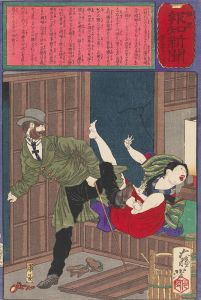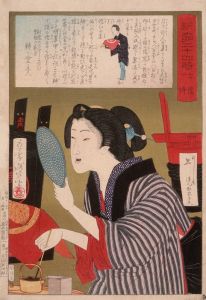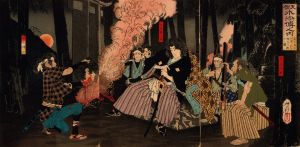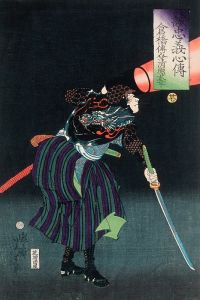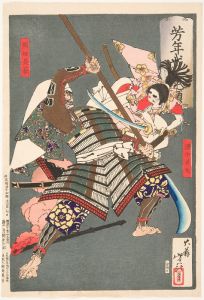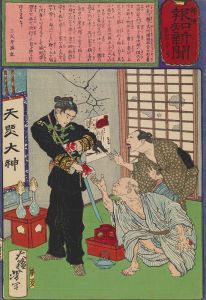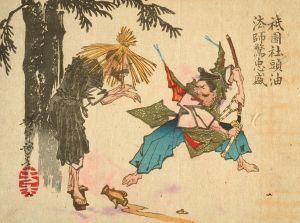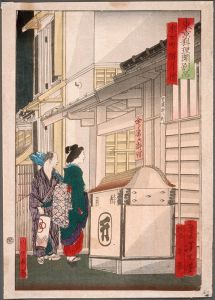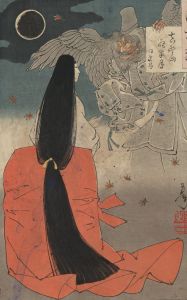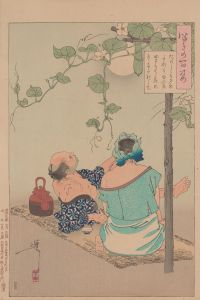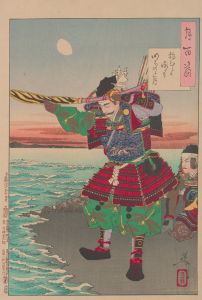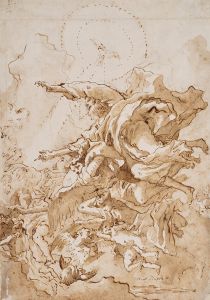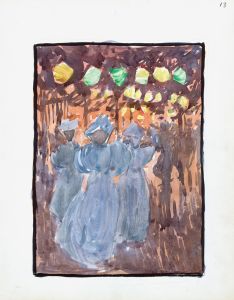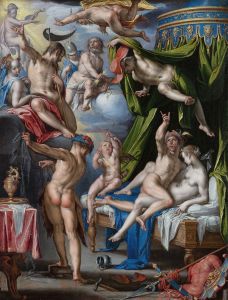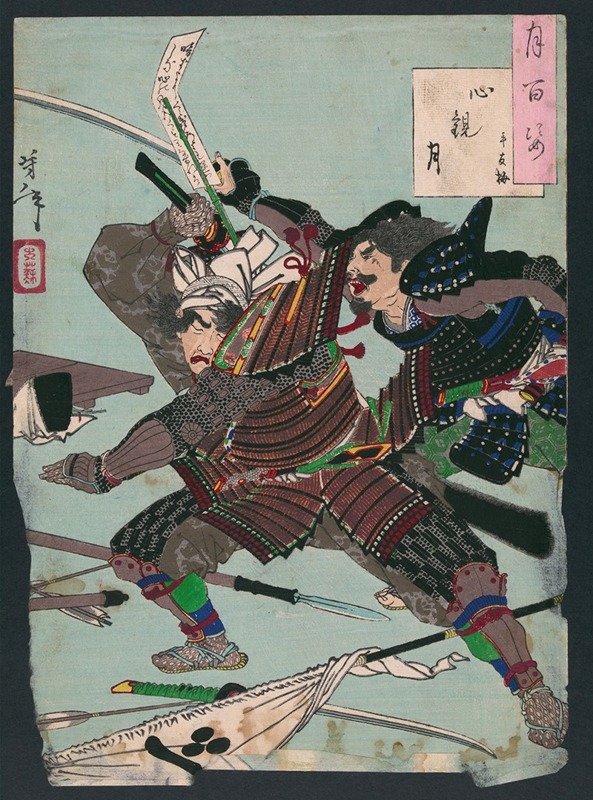
Shinkan no tsuki
A hand-painted replica of Tsukioka Yoshitoshi’s masterpiece Shinkan no tsuki, meticulously crafted by professional artists to capture the true essence of the original. Each piece is created with museum-quality canvas and rare mineral pigments, carefully painted by experienced artists with delicate brushstrokes and rich, layered colors to perfectly recreate the texture of the original artwork. Unlike machine-printed reproductions, this hand-painted version brings the painting to life, infused with the artist’s emotions and skill in every stroke. Whether for personal collection or home decoration, it instantly elevates the artistic atmosphere of any space.
Shinkan no Tsuki (translated as "New Moon of the God of Learning") is a woodblock print created by the renowned Japanese artist Tsukioka Yoshitoshi (1839–1892). This work is part of Yoshitoshi's celebrated series One Hundred Aspects of the Moon (Tsuki hyakushi), which was published between 1885 and 1892. The series consists of 100 individual prints, each inspired by historical, literary, or folkloric themes, with the moon serving as a unifying motif.
Shinkan no Tsuki depicts Sugawara no Michizane (845–903), a historical figure from Japan's Heian period who was a scholar, poet, and politician. Michizane is often associated with Tenjin, the Shinto deity of learning and scholarship, as he was deified after his death. In this print, Yoshitoshi portrays Michizane seated outdoors under a crescent moon, deeply engrossed in his studies. The composition emphasizes the scholar's dedication to learning, with the serene moonlit setting enhancing the contemplative atmosphere.
Yoshitoshi's One Hundred Aspects of the Moon series is widely regarded as a masterpiece of ukiyo-e art, showcasing his innovative use of color, composition, and storytelling. The series was created during the late Edo and early Meiji periods, a time of significant cultural and political transition in Japan. Yoshitoshi's work reflects both traditional Japanese aesthetics and the influence of modernization, making it a bridge between classical and contemporary art forms.
Shinkan no Tsuki exemplifies Yoshitoshi's ability to blend historical and poetic elements with visual artistry. The print is notable for its fine details, such as the textures of Michizane's robes and the naturalistic rendering of the moonlit landscape. It also demonstrates Yoshitoshi's skill in evoking emotion and narrative through visual means, inviting viewers to reflect on themes of knowledge, perseverance, and the passage of time.
Today, Shinkan no Tsuki and the broader One Hundred Aspects of the Moon series are celebrated as iconic works of Japanese art. They are frequently studied and exhibited in museums and collections worldwide, offering insight into the cultural and artistic heritage of 19th-century Japan.





